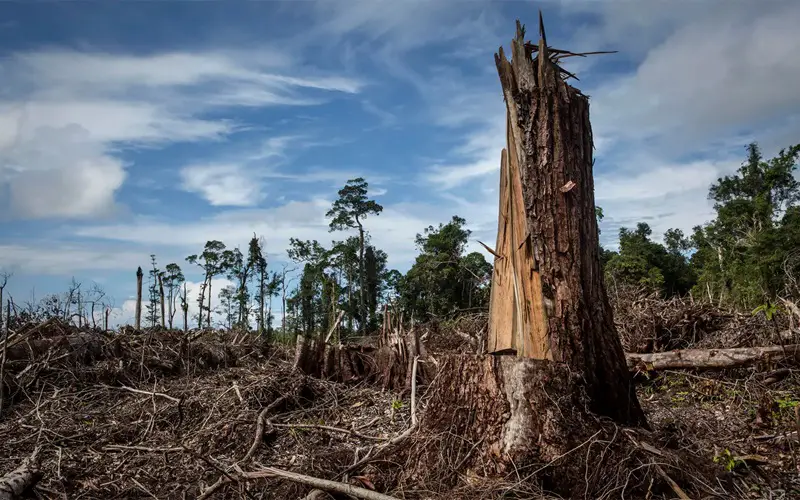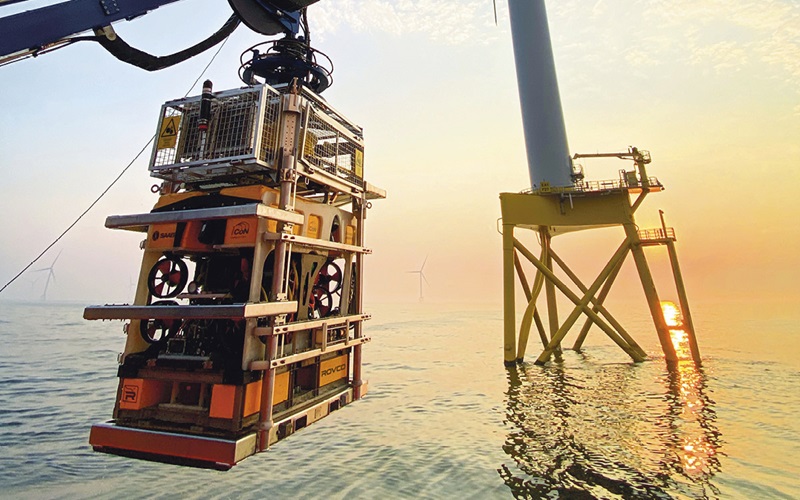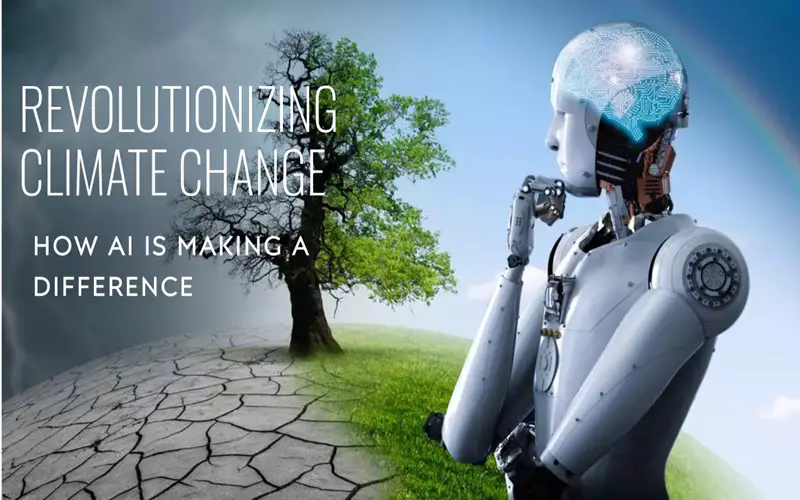The innovation of Artificial Intelligence (AI) has emerged as a revolutionary tool which has transformed to process of huge amounts of data and helped humans make decisions in several industries. Today’s major global concern is climate change, another area and the toughest challenge AI can potentially combat.
According to studies approximately 4 billion people already reside in areas most vulnerable to climate change, says World Health Organisation (WHO). This count is expected to increase to a death count of 250,000 in a year between 2030 and 2050. Factors contributing to it are undernutrition, malaria, diarrhoea, and heat stress alone.
The following article suggests 10 ways AI can help mitigate the climate change effects.
1. Icebergs Melting
Artificial Intelligence is trained in a way that it can measure changes in icebergs 10,000 times faster than a human could. Scientists can use this data to comprehend how much meltwater icebergs release into the ocean. This has been among some of the major issues accelerating recently due to increased global warming. Scientists also say that AI can map large Antarctic icebergs in satellite images in just 100th of a second, according to the reports of the European Space Agency. On the other hand, this would take a lot of time for a human to do so, and identification of icebergs amid the white clouds and sea ice is hard.

2. Deforestation Mapping With Ai
Artificial intelligence, satellite images and ecology expertise are also utilised to map the impact of deforestation on the climate crisis. Space Intelligence is a company based in Scotland that works for 30-plus countries and has successfully mapped more than 1 million hectares of deforested land from space using satellite data. The technology measures deforestation rates and how much carbon is stored in a forest.

3. Ai For Helping Communities Vulnerable To Climate Risks In Africa
In Africa, the United Nations has made use of AI to help the most vulnerable communities to climate change. The regions include namely, Burundi, Chad, and Sudan. There’s another project named the IKI project which uses AI to help predict weather patterns through which communities and authorities can better plan ways to adapt to climate change and reduce its impact. This includes accessible clean energy, implementation of proper waste management systems and reforestation.

4. Using Ai To Recycle More Waste
Another AI system that is helping to tackle climate change is through efficient waste management. Waste produces methane in huge amounts which accounts for 16% of global greenhouse gas (GHG) emissions, the United Environmental Protection Agency says. A software startup based in London, UK Greyparrot has developed an AI system that analyses waste processing and facilitates recycling to help recover and recycle more of this waste material.

5. Use Of Ai In Cleaning Up The Ocean
In the Netherlands, an environmental organization named The Ocean Cleanup is making use of artificial intelligence and other such technologies to help clear plastic pollution from the ocean. AI that helps in the detection of objects is helping the organization in creating detailed maps of ocean litter in remote locations. This ocean waste can be gathered and removed, which is more efficient than other conventional cleanup methods using trawlers and aeroplanes.

6. Ai Helps Predict Climate Disasters
Sipremo a company in Brazil, is using AI to predict where and when climate disasters may occur, and what type of climate disasters they could be. The motive behind this is to work towards the preparedness of businesses and governments for climate change and the rising challenges for various communities as well. The company works in several different industries including insurance, energy, logistics and sport. These industries use this company’s AI technology, which analyses disaster conditions and factors such as air quality to inform decisions on certain events.

7. A Wish List Of Ai Climate Tools
Google DeepMind, Google’s AI research laboratory, uses AI to help fight climate change in several areas. This includes building a wish list of datasets which help in the advancement of global AI solutions for climate change. Google DeepMind is working on the same with Climate Change AI. Climate Change AI is a non-profit organization (NPO) set up by volunteers from academia and industry who realise the potential of machine learning in combating climate change. Google AI tools also help in improving weather forecasting & increasing the value of wind energy by predicting the output from a wind farm.

8. How Ai Can Help Industry Decarbonise
AI technology is used to help companies in the oil, mining metal, and gas industries to decarbonize their operations. An emission-tracking platform in California, United States named Eugenie.ai has been developed that combines satellite imagery with data from machines and processes. This data is further analysed by AI to help companies keep track, trace, and mitigate their emissions by 20-30%.

9. Reforesting Hills In Brazil Using Drones
AI-powered computers along with drones in Brazil have paired up to reforest the hills. The computer’s job is to define targets and several seeds to be dropped. This initiative was launched in January 2024 and aims to grow seeds in hard-to-reach areas. A single drone Is estimated to disperse about 180 seed capsules per minute, 100 times faster than utilizing human hands for traditional reforestation.

10. Reducing Carbon Footprints Across Industries
The most significant benefit of artificial intelligence in climate change mitigation is its potential to help mitigate carbon footprints across various industries. AI calculations offer assistance in planning energy-efficient buildings, arranging low-emission transportation courses, and indeed in carbon capture innovations. AI is making a difference in businesses’ move to greener, more feasible hones by streamlining operations and zone recognition for vitality reserve funds.

Conclusion
Artificial Intelligence has become the reality of today and the future of the next generation. The day is not far from when we can imagine a world where these challenges of climate change are not only understood but are looked after and being actively countered by one of humanity’s most advanced creations.


















